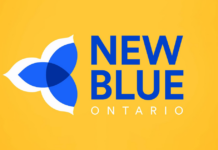On the heels of mass protests by farmers in the Netherlands, a fledgling pro-farmers party has upended the traditional political landscape by winning big in provincial elections.
The Farmer Citizen Movement became the country’s biggest political party in the Senate and its mandate includes opposing Prime Minister Mark Rutte’s heavy-handed nitrogen emission reduction mandates.
In Canada, the Liberal government has proposed a similar nitrogen emission reduction policy for farmers, causing a stir among some industry groups. Netherland’s latest populist political upset could have ramifications for Prime Minister Justin Trudeau’s plans as Canada seeks to follow in the footsteps of its European counterparts.
Inspired by the European Union’s Farm to Fork (F2F) strategy, the Netherlands announced a series of measures to curb emissions from nitrogen by 50% by the year 2030. The Dutch government has also launched a buyout scheme to purchase up to 3,000 farms that are considered to be the so-called worst polluters of ammonia and nitrogen oxide in EU-protected areas.
The Netherlands is a global agricultural powerhouse, second only to the United States in terms of exports. With its high-powered farming industry, the country dominates agricultural products. Such measures have predictably angered the country’s farmers who face being deprived of family businesses that stretch back centuries.
Last year, over 40,000 Dutch farmers took to the streets to express their grievances, leading protests outside government buildings and even the official residences. Those protests have continued to this day.
As exclusively reported by True North in the Fertilizer Files series, Agriculture Canada has cited the EU’s F2F framework as an inspiration for Canada’s own fertilizer targets which include a voluntary 30% reduction in nitrogen emissions by the year 2030.
Liberal Agriculture Minister Marie Claude-Bibeau has even described Canada’s policy as being “very closely aligned” with “the fertilizer reduction target in the EU.”
While there are some similarities in the direction Trudeau has taken Canada to that of Rutte’s administration, the question remains, could Canada be caught in the grips of a farmer uprising?
Historically speaking, rural populism has a long and storied past in Canada. Agrarian populist parties like the United Farmers of Ontario and United Farmers of Alberta dominated provincial politics in the early 1920s and the 1930s.
Today, the Conservatives have indicated some suspicion towards the Liberal fertilizer emission reduction plan but opposition has largely come from industry groups.
In a Jun. 2022 interview with True North, President of the Western Canadian Wheat Growers Gunter Jochum said that if farmers feel as if they have their backs against the wall, a similar situation to that of the Netherlands could unfold here.
“We have talked to other producer groups, we’re very concerned about exactly that same scenario. And will we go to these lengths like what’s happening in the Netherlands? I don’t know,” said Jochum.
“But, you know, all I can say is, if you push farmers back right up against the wall where their livelihood is at stake and it’s a direct result of government overreach and non-science-based policies, then, who knows what could happen?”
Internal Agriculture Canada documents obtained by True North have revealed that the Liberal government has at least considered the possibility of a more heavy-handed approach to enforcing agriculture emission reductions should the current voluntary approach fail.
“A number of policy measures could be put forward for consideration beyond just a ‘voluntary agreement’,” wrote Agriculture Canada officials in a policy briefing.
“A suite of policy approaches will be necessary, and consideration to be given to a regulatory backstop should voluntary approaches not be successful.”






















